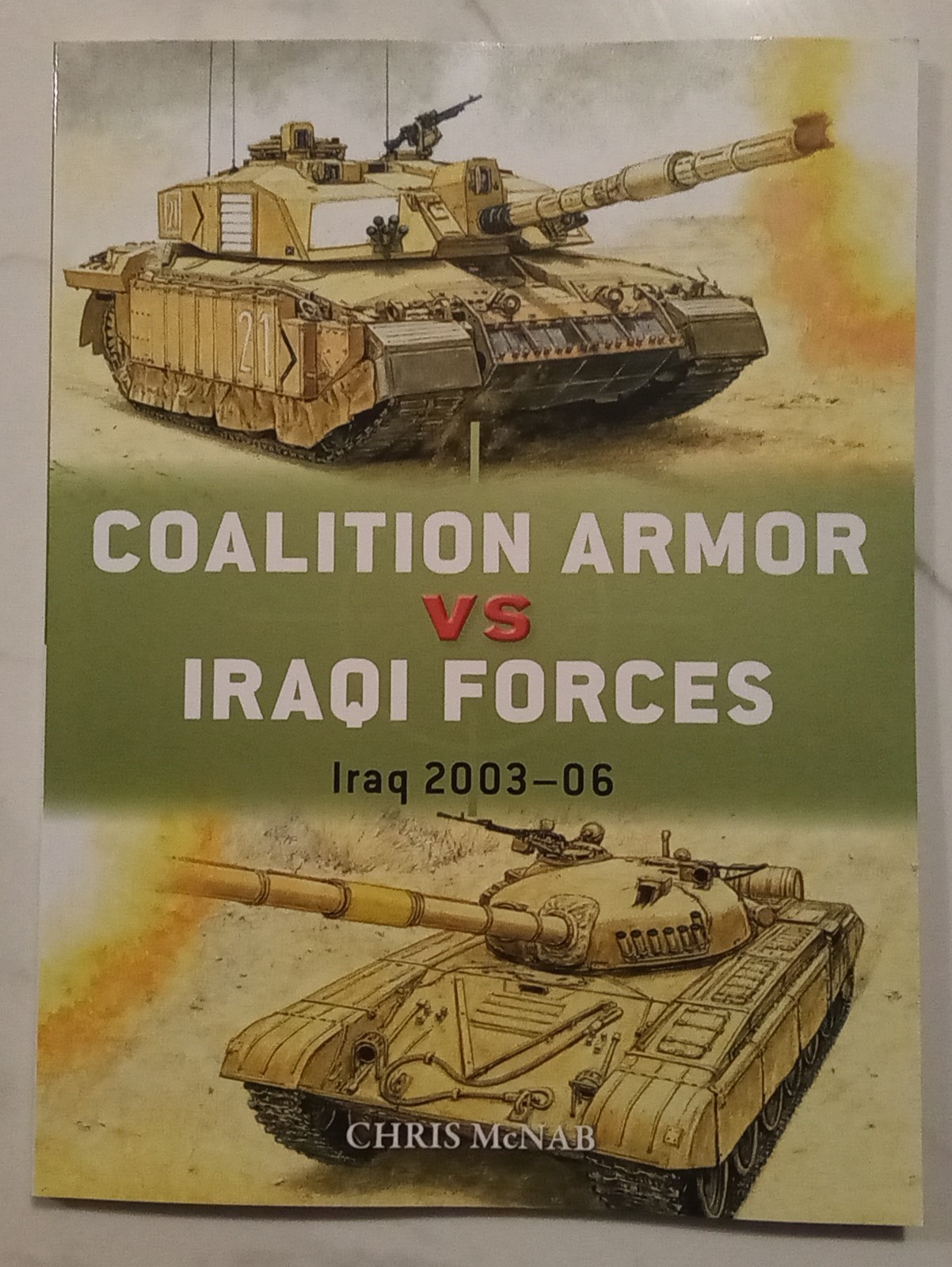On 20 March 2003, Coalition forces launched the invasion of Iraq on a massive scale. Their armored fighting vehicles (AFVs) faced an uncertain level of resistance, and soon had to overcome a wide range of enemy threats. These included tank vs tank clashes during the first days of the invasion (most famously at Basra and Mahmoudiyah), and subsequently the dangers posed by enemy rocket-propelled grenades, cannon fire, antitank guided missiles, and improvised explosive devices.
This vital new study covers both the opening clashes between opposing AVFs [sic] and the tactics developed by Iraqi insurgents seeking to neutralize Coalition superiority. Featuring full color photos, battle scenes, weaponry, and tactical illustrations, it draws upon first-hand accounts and official post-battle analyses to examine how Coalition forces responded to the change in the nature of the threats. Among the topics addressed are the coordination between Coalition infantry and air power; how dealing with roadside bombs in Iraq resulted in changes to equipment, tactics, and force structure; and the lessons learned for future warfare.
Table of Contents
Introduction
Chronology
Design and Development
Technical Specifications
The Combatants
The Strategic Situation
Combat
Statistics and Analysis
Aftermath
Bibliography
Index
I read this book in an afternoon and came way somewhat unimpressed; the book is inconclusive, inaccurate, and dated. For example, page 20, when describing the Bradley IFV and CFV, it apparently has two TOW ATGM, one either side of the turret; page 40, when describing the BMP 2, and in the next sentence, referring to the BMP 3, a different vehicle that did not feature in the war; there are images of USMC AAV 7, but no mention of the vehicle in the text.
The book covers the period 2003-2006, its been over 20 since the start of that, with volumes written on this subject already, thus I was expecting a very overarching summary given the size of the title and the limited page count. Something along the lines of doctrine, training, technology, tactics of both sides, with a considered conclusion. But the complexity of the subject is simply too great to cover in such a short book. Unless it was bullet points with brief examples given.
Reading what is there, Saddam was negligent, almost criminal, in putting up a fight with 1960, 1970, 1980 Soviet technology against 1990 Western technology; his troops, while numerically superior, were not fighting fit, most fleeing before the arrival of Allied forces, a standing professional army who believed in the righteousness of their purpose. Those Iraqis with the mettle to fight were soon dispatched to paradise, an almost unfair fight by any account.
The Iraqis were ill suited to the West's maneuver warfare, having just come out of trench warfare with the Iranians only a few years prior. When confronted, or even before, the Iraqis went straight into a defensive posture, digging in where they were, or in prepared positions. This played into the hands of Western doctrine and technology.
The Iraqis were further handicapped with rigidly centralized decision making and planning, and a deadly aversion to improvisation in the field. Again, at diametric odds to Western teaching.
The illustrations look amateurish when compared to other Osprey books released at the same time, like they have been done with colouring pencils, not the near photograph quality I'd associate with Osprey.
Given the size of the subject attempted to be covered here, I was surprised to read about specific details at the operational level, for example US Army training MOS for tanks, Private Jessica Lynch being captured, and specific numbers of vehicles used in a particular action when trying to describe tactics.
There is some good detail and specifics when comparing vehicles, but no analysis or interpretation of what that means on the battlefield and how it impacts or influences outcomes. For example, page 40, "the BMP-2 had a much better fuel economy and therefore operational radius: 600km on the road compared to 400km for the Bradley. " The implication being that the BMP outranged the Bradely, which is a strategic advantage as it necessitates a shorter logistical train.
Under 'Technical specifications', pages 35-43 with images; most of this is comparative figures and could be better presented as a table with the differences easily seen. But even here, it is truncated and muddled. This chapter covers specifically T-72M vs M1A2 Abrams, Bradley M2A3 vs BMP-2, and RPG/IED vs Warrior.
There is an 'Aftermath' chapter, but no conclusions. I was confused that the author assert the US Army was tactically unprepared for the deployment of armour into urban warfare, but quotes a 2005 article from Joint Forces Quarterly titled 'Everyone wants tanks: Heavy Forces in Operation Iraqi Freedom' that lists six key reasons for the popularity of tanks in urban battles:
1. Tanks are highly resistant to fire
2. Tanks led the advance
3. Tanks immediately took the enemy under fire
4. Tanks were highly effective in urban operations
5. Tanks had shock effect
6. Fuel supply was less of a problem than originally thought
(Gordon & Pirnie 2005, p.85-86)
If there was a theme running in the book, it is that the M1 and M2 vehicles proved their worth and paid for the investment into each with lives saved, each vehicle being the best in its class (this has since been proven in more recent conflicts, too).
In summary, I cannot, in good faith, recommend this book, the subject is simply too large to be covered with any credibility in such a short space, even with the numerous caveats in the text.
Less is more, except for battle maps
I'd like to model this... wash day in the motor pool

